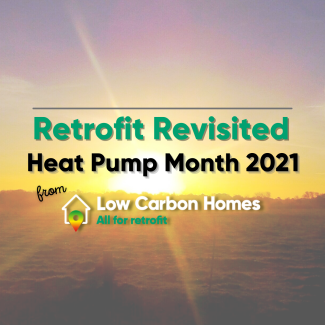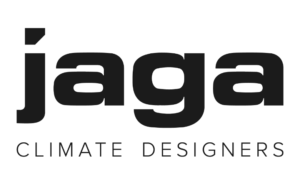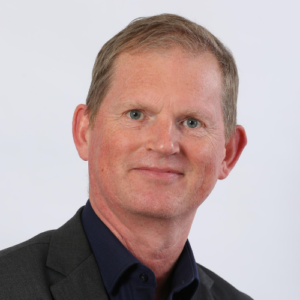Heat Pump Month retrofit revisited

Heating our homes accounts for 14% of the UK’s carbon emissions, requiring a wholesale switch to energy efficient heat pumps. According to the UK Government, 600,000 heat pumps a year need to be installed from 2028 to meet our carbon-reduction targets, aligning with installation levels of other European nations.
Heat pumps create warmer, better homes whilst improving lives and livelihoods. Heat Pump Month brought together industry bodies, manufacturers and suppliers with influencers, specifiers and installers in order to enable the scale-up of heat pump deployment across the UK.
In June, we staged a month-long series of free-to-attend online events to bring together housing, built-environment, policy and installation professionals to collaborate around one the UK’s greatest carbon-reduction challenges – our homes.
Heat Pump Month was backed by Ground Source Heat Pump Association, Heat Pump Association, Heat Pump Federation and MCS, and supported by heat pump manufacturers: Daikin, Kensa, Mitsubishi Electric, Panasonic and Vaillant, plus heat emitter manufacturers Jaga UK.
Heat pump 'forests'
“At MCS, we like to talk about heat pump ‘forests.’” Alex Hughes, MCS Operations Analyst was providing deployment trends of heat pumps across the UK. “These are regions where there’s very high uptake of heat pumps.”
Heat pump uptake was “strongly correlated” to areas where a large portion of the population was off the gas grid, Alex explained. The adoption of heat pumps was highest in Scotland, East of England and the South West.

London, the North West and the North East were lagging behind but MCS was seeing these numbers increase week on week. “2020 was a record year for ground source heat pump installations,” Alex remarked. “That’s a positive sign as well.”
Our panel agreed there was huge potential for growth in the heat pump market. “The Climate Change Committee, which advises the government on climate change, recommends the supply chain be installing roughly one million heat pump units by 2030,” Alex highlighted. “There needs to be significant growth in the market.”
'A green street in every part of the UK'
Karl Drage, Director of Business Development and Contracting at Kensa Group, one of the Heat Pump Month technical brand partners, agreed that the heat pump market needed to grow to meet government targets.

“The government’s asking us to scale up from 30,000 heat pump installers a year in 2021 to 600,000 by 2028—close to a 2,000% increase,” he highlighted. “For context, that’s four times the growth rate the mobile phone experienced between 1996 and 2006, when mobile phone ownership increased from 16% to 80% of UK households!
“We need to take a strategic approach,” Karl continued, “and to maximise economies of scale, by orchestrating a street-by-street installation basis. That’s where Green Street comes in!
“On Green Street, every property has a network heat pump,” Karl explained. “These come with smart controls, automatic integration with heat pump electricity tariffs and a heat battery for hot water and heating. This is our vision for net zero heat at the heart of the energy system.
“There’s a Green Street in every part of the UK,” Karl pointed out. “We need a vision that every street in the UK can become a Green Street. To that end, we intend to roll out engagement, to understand what the transition is really going to require.”
Wide range of building types
“I have been involved with a lot of retrofit installations, some of which have been quite complicated—like this seventeenth century barn renovation, which featured on George Clarke’s TV show Restoration Man!”

Roland Gurner, an Air-To-Water Specialist at Oceanair UK, gave a presentation to attendees on Panasonic’s air-to-water Aquarea heat pump range.
He explained that they had been installed on a wide range of building types and in all kinds of weather conditions. “I was introduced by the builder and told the client wanted a reliable environmentally-friendly heating system,” he recalled. “I chose Panasonic because I knew I could rely on their support, build quality and their Total Capacity (T-CAP) range most importantly would ensure a constant delivery of heat in colder months.”
Roland described some of the extraordinary features of Panasonic’s heat pumps.
“There are three main products in the range: High Performance, the heat pump designed to give higher efficiency for more energy efficient homes; the T-CAP, which is able to continue to deliver its kilowatts as the outdoor temperature drops; and the high temperature heat pump, which can be used for homes with radiators which you might not want to change.
“They come with a built-in circulation pump, an expansion vessel and a built-in backup heater. So It requires two power supplies: one for the compressor, another for the backup heater.
The newer versions have a touch controller and a built-in, in-line strainer—a magnetic filter with a J-series. You can even see how much energy the heat pump is using on a control panel.
Keeping your cool
In a Low Carbon Homes first, our Heat Pump Month conference featured the Ask Me Anything sessions where attendees could put questions to heat pump experts from MCS, Heat Pump Federation, Ground Source Heat Pump Association and the Heat Pump Association.

One attendee asked Jaga UK during one Ask Me Anything session what its position on a ‘fabric first’ approach, which means buildings should be insulated before considering installing a heat pump.
Andy Williams, Technical Service Manager at Jaga, explained insulation was a two-edged sword. “As our construction becomes better as a result of better insulation, any heat we’re generating in the building stays inside. The insulation isn’t smart enough to know what’s being generated from waste. Homes will become uncomfortable, so we’ll need to do some form of cooling as well as heating.”
Andy explained how Jaga heat pumps had cooling capability. “Thermostatic radiator valves control radiator temperatures. As the room heats, the TRV says, ‘OK, I’m hot enough now, I’m going to turn off the radiator.

“Now, if you’re trying to pump cool water to provide cooling from that radiator, obviously the room’s already hot, so theoretically the valve will be closed. We offer an alternative TRV head that can be activated into cooling mode—so basically you’re bypassing the TRV’s temperature sensor, meaning cool water can flow through the radiator when needed.”
“This is unique,” Jaga’s Managing Director Phil Mangall told us. “Jaga provides a radiator that can heat and cool.”
Heat pumps running on Jaga’s LoH2O technology could save consumers money on energy bills because they were very efficient, attendees heard.
“Our heat pumps are produced with fast-conducting aluminium and copper heating exchanges,” Phil said. “They hold 90% less water than a similar output steel panel radiator, meaning they heat up and cool down much quicker, responding to changes in temperature demand quicker. They warm up rooms around nine times faster than a steel-panel radiator.”
'Our greenest yet'
Vaillant, another of our technical brand partners, gave some fascinating insights into the types of extraordinary technologies they use to make their air source heat pumps market leaders in energy efficiency.
“The aroTHERM air to water heat pump is our greenest yet,” Chris Johnson, Vaillant’s National Sales Director, said. “The latest monobloc in our range is the first one to use a natural refrigerant.
“By switching from R410a to R290 we managed to reduce the Global Warming Potential of this product from 2,088 to just three,” Chris explained. “The product itself is almost carbon neutral.”
Chris also explained Vaillant took a holistic approach to heat pumps. “A Vaillant heat pump is not just a product. We develop it using a system approach—the aroTHERM plus system approach.”

“The first accessory you can have with the range is the hydraulic station, this is developed to speed up the installation because it’s already pre-plumbed and pre-wired,” he said.
“The second way you can buy this product is in a uni-tower. In essence, the top part is a hydraulic station and the bottom part is the storage cylinder. This product has been focused on the self-build and new-build market. It has all the components required for a simple installation. It can deliver both single- and two-zone heating straight from the controls.”
“The biggest percentage of sales is for installs with a heat pump interface,” Chris concluded. “This product allows for more flexibility with the system. You can integrate it with a hybrid system like an oil or gas boiler. You can integrate it with third party controls, and some of the other modules like the heat exchanger can be fitted to this particular product as well.”
Heat pump myth-busting
Our panellists agreed the heat pump technology was already there, but cracking the mass market challenge would take effective engagement across the supply chain.
“It isn’t all about the box,” Mitsubishi Electric National Residential Installer Sales Manager Jonathan Prescott remarked. “To realise the potential of a Ecodan heat pump, we have to support everyone in the chain to deliver a renewable heating system.
“That means engaging in the early days of design, and advising social housing providers, architects and installers, to ensure installers are trained and supported throughout the installation process, giving customers confidence in our standards and providing the right assistance all the way up to commissioning and handover.”

Max Halliwell, Vice Chairman Heat Pump Association, agreed that raising customer awareness was essential during an Ask Me Anything session. “We’re still very much at the beginning of the consumer journey in terms of confidence.”
Nick Huston, Future Energy Business Manager at Daikin, another of the Heat Pump Month campaign partners, highlighted that his company was doing all it could to engage customers as part of a broader effort to demystify heat pumps.

“We’ve got really strong engagement and communication to minimise disruption to householders. We've got demonstration vans going around, videos and user guides to explain the work involved, resident coffee mornings to explain the benefits.”
Nick busted some other myths about heat pumps. Many customers, Nick said, said heat pumps were too technical and difficult to install. “In fact they’ve never been easier to install,” he explained. “Most heat pumps have simple water connections, they come as a sealed unit to fit on the outside of the property, and internally its normal pipework, radiators and heating controls.”
'Heat pumps to become natural thing'
Our panelists agreed there was a real need to raise customer awareness of heat pumps through good engagement.

During an Ask Me Anything session Max Halliwell concluded: “We’ve engaged with quite a few of the big housebuilders, just to talk them through how heat pumps could change their emissions and help them meet the upcoming policy changes in future like L-SAP.
“We’re seeing very positive things in terms of engagement, but ultimately they won't have a choice. If SAP changes—and it’s likely to - there are thousands and thousands of positive responses during the consultation.
“The uptake in newbuild homes is going to be the key thing. When building regs change, heat pumps will be a natural thing to do.”
Sign up free (below) to our On Demand resources to view the Heat Pump Month videos and slide decks
Retrofit Glossary of Terms
| Term | Definition | Source |
|---|---|---|
| Deep /whole house retrofit | A complete retrofit approach where a house is treated as a joined-up system focusing on building fabric first, to strategies for heating, ventilation and cooling. This ensures that measures work together effectively and efficiently in the long-term. | TrustMark. 2020. Whole House Retrofit - A Consumer Guide. London: BEIS. |
| Fabric first | A retrofit strategy advocating for the building fabric improvements such as insulation as the priority measure. | Institute for Sustainability. 2012. Retrofit insights: perspectives for an emerging industry. London: UCL Energy Institute and Technology Strategy Board. |
| Fuel poverty | Fuel poverty is defined as households who spend 10% or more of their income on domestic energy use, meaning that they cannot maintain an adequately warm home. | Rosenow, J. 2012. Energy savings obligations in the UK – a history of change. Energy Policy. 49, pp. 373-382. |
| PAS 2030:2019 | PAS 2030:2019 is the industry specification (previously PAS 2030:2017) to which all energy efficiency installers must be certified and compliant with when carrying out energy efficiency measures under government initiatives. | TrustMark. 2020. Support for gaining Publicly Available Specifications (PAS) and Microgeneration Certification Scheme (MCS) Certification. [Online]. Available from: https://www.trustmark.org.uk/tradespeople/how-to-become-pas-mcs-certified#questions |
| PAS 2035:2019 | PAS 2035:2019 is the overarching specification for a framework of new and existing standards, promoting a whole house retrofit approach. Once an installer updates their certification to PAS 2030:2019, the PAS 2035:2019 requirements commence. | Elmhurst Energy. 2020. PAS 2035 for Installers. [Online]. Available from: https://www.elmhurstenergy.co.uk/pas-2035-installers |
| Retrofit | The retrospective fitting of building fabric improvements like insulation, low carbon HVAC, such as heat pumps and integrated renewables like PV panels, to improve the energy efficiency, health and comfort of a house and reduce its CO2 emissions. | Putnam, T. 2020. Grassroots retrofit: The role of community-led approaches in the UK's residential retrofit challenge. Master's thesis, University of Leeds. |
| Thermal comfort | Thermal comfort is defined as the condition of mind that expresses satisfaction with the thermal environment, and refers to a number of conditions in which most people feel comfortable. |
Camuffo, D. 2019. Temperature: A Key Variable in Conservation and Thermal Comfort. In: Camuffo, D. ed. Microclimate for Cultural Heritage. [Online]. 3rd edition. Amsterdam: Elsevier, pp. 15-42. |
Author

Article written by: Alex King | LinkedIn | Twitter @alexdpking